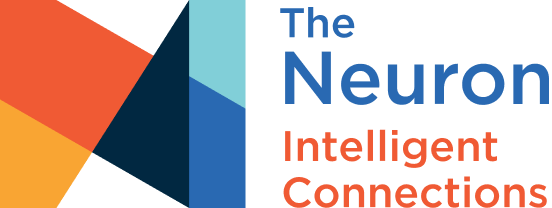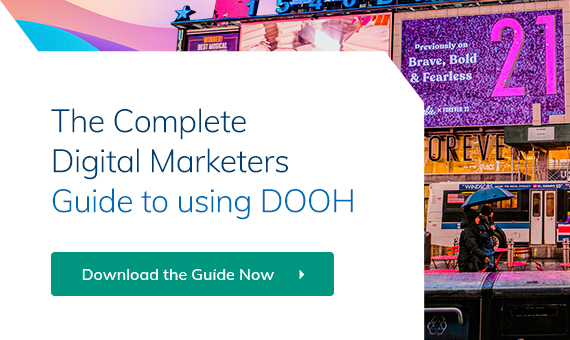What does OOH advertising mean in marketing – what counts as OOH and what approaches can you take to deploy it?
What Is OOH Advertising?
OOH stands for ‘out of home’ advertising – an umbrella term for any type of visual advertising media outside of the home. OOH includes everything from billboards to signs, posters, ads on street furniture, in shopping malls, sports arenas, grocery stores and entertainment venues.
Utilizing OOH brings your brand to a wider audience, be it in shops, at bus stations, mall kiosks, gas stations, in cinema foyers, or via roadside advertising.
In a nutshell, OOH is an effective mass advertising tool that offers serious bang for your buck – and when you combine it with digital displays and modern audience targeting methods, it becomes even more powerful.
This is why out of home advertising is making a strong comeback post lockdown.
According to the latest figures from the Out of Home Advertising Association of America (OAAA), the vast majority of top OOH advertisers (88%) increased their year-on-year OOH spend in Q3 2021 – and 51% doubled it.
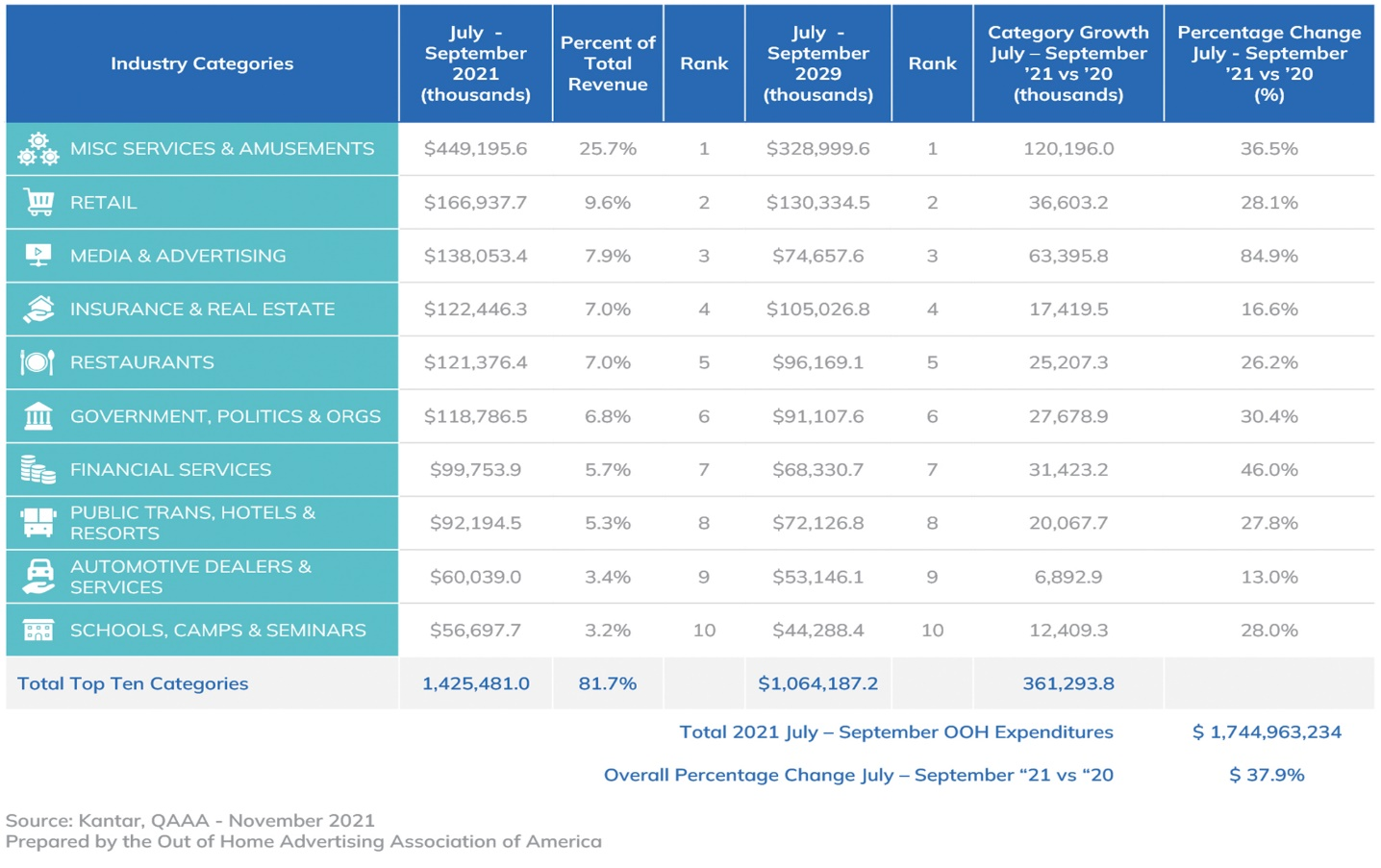
(Table showing Q3 2021 bounce-back in OOH spending (source: oaaa.org)
Digital OOH vs Traditional OOH vs Programmatic DOOH: What’s the Difference?
As technology has advanced over recent years, digital ad screens have become increasingly popular as a way of displaying creative ads.
Digital out of home media, or DOOH, is simply the digital form of OOH, where adverts are displayed on a digital LED screen, rather than being printed. As such, digital OOH screens can rotate between a selection of adverts and show animated and video content alongside static images.
This opens up a world of opportunities for audience targeting, that brands are only just starting to make use of thanks to technological improvements and the advent of powerful programmatic digital OOH platforms.
Programmatic DOOH
Programmatic DOOH, also called pDOOH, is the use of automated bidding platforms to buy and sell space on digital OOH media. Much like buying online advertising, media buyers can specify the conditions under which their ads should be shown for maximum impact.
These include:
- Weather conditions/temperature
- Time of day/day of week
- News events (local, national, or global)
- Audience information – i.e., target specific audiences in relevant ad environments
- Foot traffic based on anonymized mobile location and other data
This means you can add contextual relevancy to your outdoor ads – easily adjusting your creative to suit the audience, the location and changeable conditions like the weather, temperature and even sports results and local, national, or global events.
What Is an Example of OOH?
Effective OOH is:
- Eye-catching
- To-the-point
- Contextually relevant
Take a look at this recent example from news company Manchester World in the UK, which timed its digital billboard ad to coincide with the Manchester United vs Manchester City soccer game. Cleverly leveraging the city’s well-loved symbol of a worker bee, strong visual appeal and a thoughtfully placed outdoor roadside strategy, the ad drove significant online traffic for the publication.
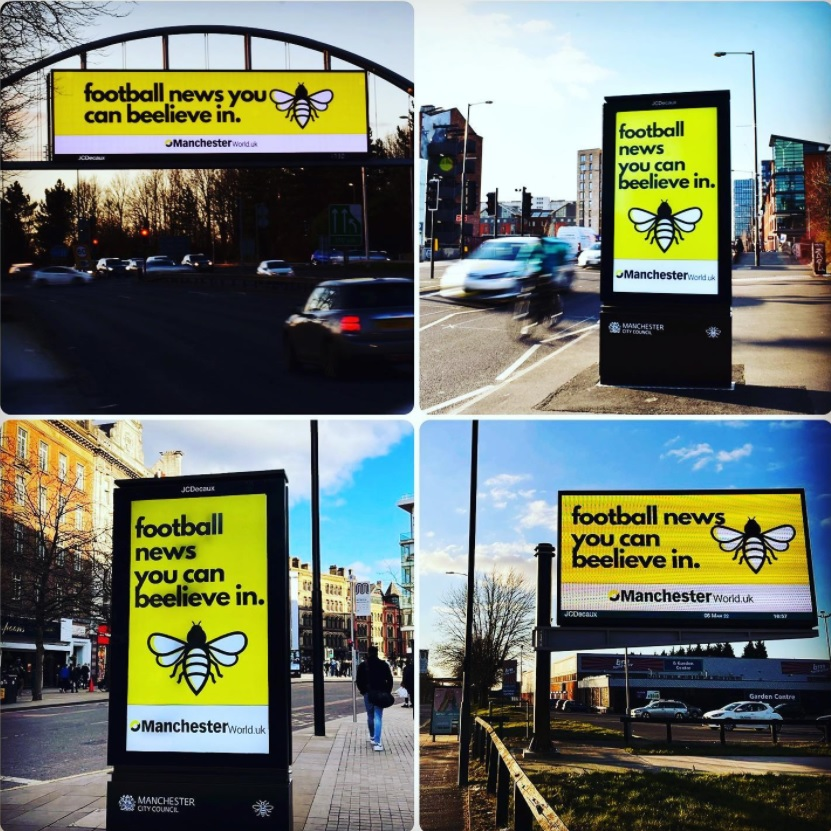
(Source: instagram.com)
Can OOH Advertising be Used as Part of a Multichannel Strategy?
Traditionally, multichannel strategies were limited to online digital campaigns spread across different platforms – social media, online ad networks, websites, email, etc. Increasingly though, marketers are looking to expand their online campaigns into the out of home advertising space because:
- New technologies such as QR codes allow a more interactive experience with OOH ads – and means OOH campaigns can be combined easily with mobile marketing
- In an increasingly crowded online space, consumers are disengaging with adverts they see as interruptive and annoying and using ad blockers to avoid them
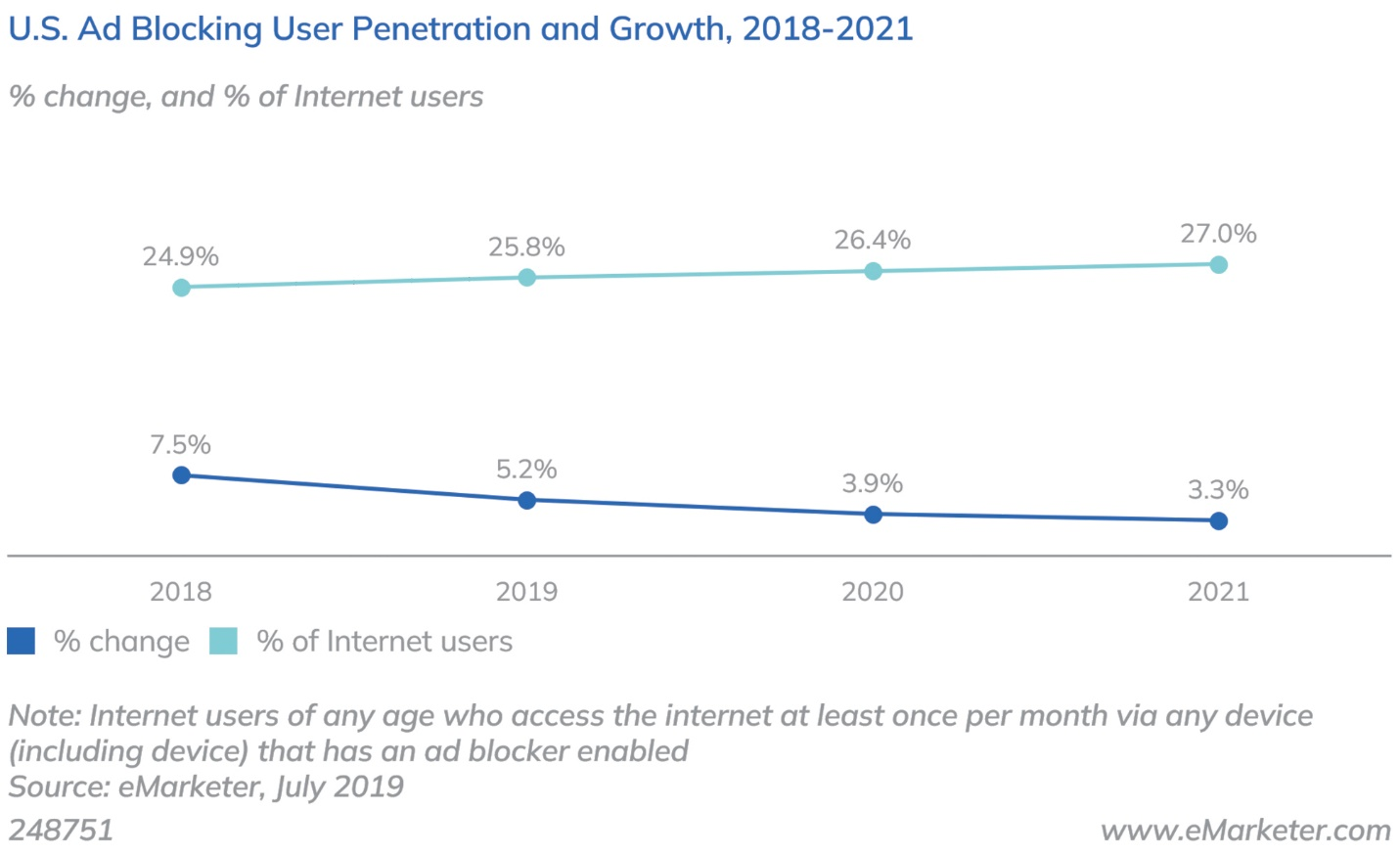
(Image source: emarketer.com)
By contrast, OOH cannot be blocked from view, making it a great option for multichannel campaigns – particularly when brands use pDOOH platforms to create a target consumer that match your online audience.
To incorporate OOH into your multichannel campaigns effectively, consider:
- Using the same branding, imagery and motifs across your ad creative for all channels
- Incorporating dynamic media such as animation and videointo your place-based DOOH ads
- Adding interactive elements such as QR codes and social media hashtags that consumers can engage with on their mobile devices
- Incentivizing consumers to share DOOH on social media to generate valuable user generated content (UGC)
Is OOH Effective?
According to recent research by leading financial advisory firm Solomon Partners, OOH offers significantly more value in terms of reach than television, radio and print, as well as most online advertising.

(Image source: oaaa.org)
When considered alongside Solomon Partners’ previous research, which revealed that OOH generates the best ad recall of all major media due to impactful displays and contextual relevancy, it’s clear that OOH advertising is an extremely powerful tool and should be incorporated by brands of all shapes and sizes – especially as today’s pDOOH platforms make digital OOH inventory more accessible than ever.
Finding the Right pDOOH Buying Platform
To make your OOH advertising as effective as possible, you need to find the right buying platform for your OOH ads. Look for automated bidding, access to a wide range of DOOH media owners, an easy-to-use interface and plenty of real-time metrics you can use to optimize your campaign.
The Neuron is a pDOOH platform especially designed to connect small businesses to prime OOH ad inventory, with a full suite of analytics tools and single-click processes for efficiency and ease of use.
Try The Neuron today to transform your OOH campaigns.
